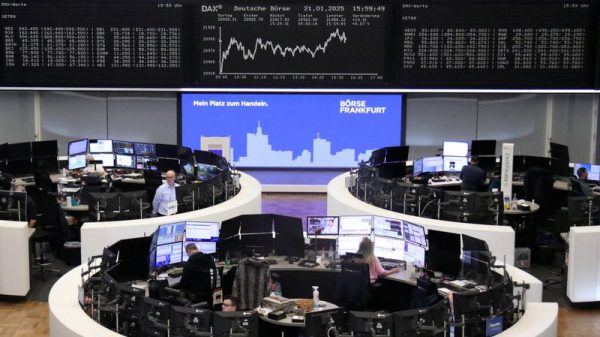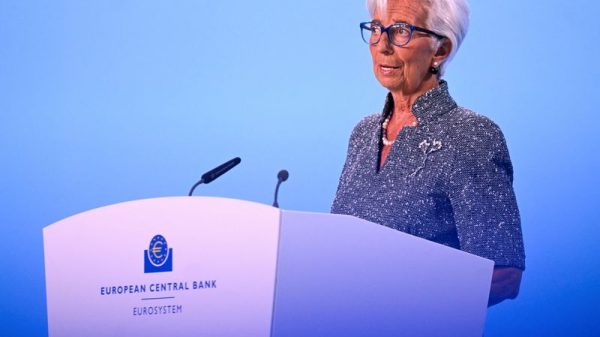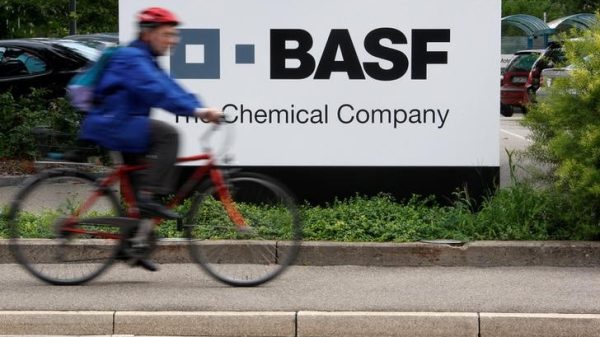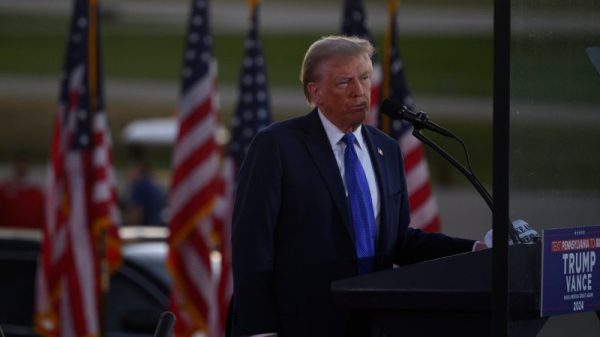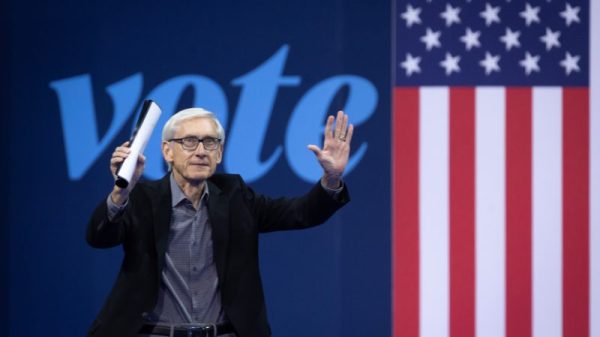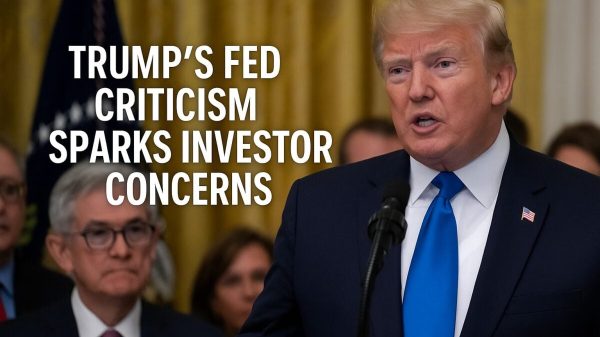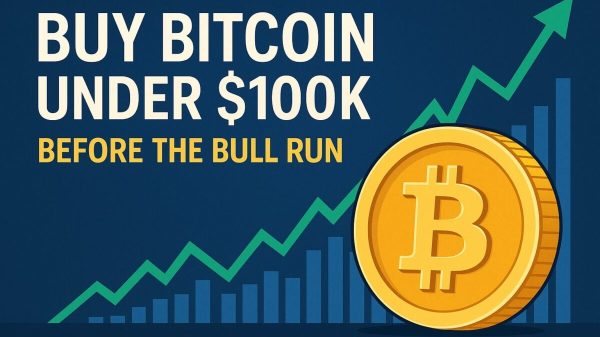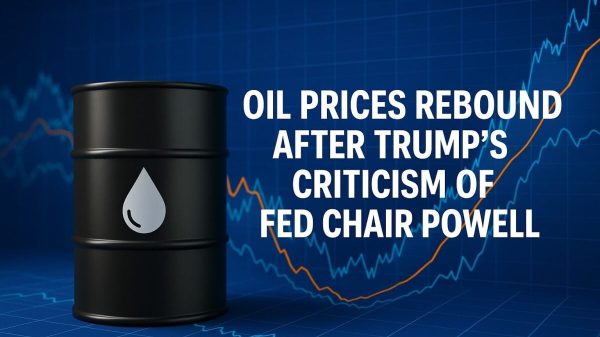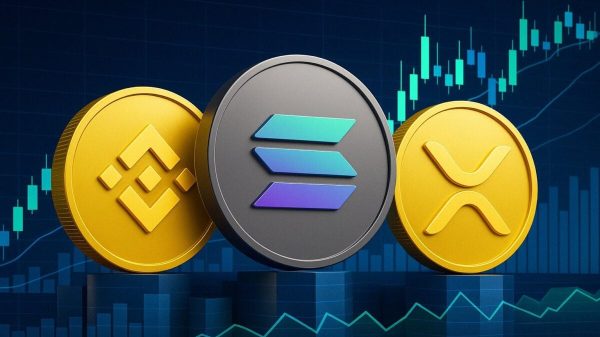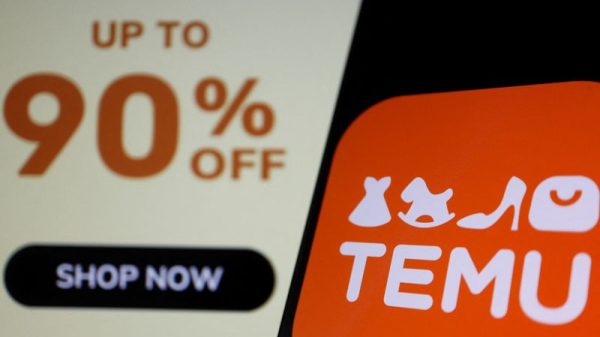Chevron Corporation (NYSE:CVX) announced robust earnings for the third quarter of 2024, with profits totaling $4.5 billion, or $2.48 per share. The oil giant’s financial results were bolstered by a year-over-year increase in worldwide production and record cash returns to shareholders. CEO Mike Wirth highlighted the company’s operational success, particularly in the Permian Basin and at key international facilities, and outlined strategic plans for asset divestments and cost reductions.
Key Takeaways
Chevron’s earnings for Q3 2024 reached $4.5 billion ($2.48 per share), with a 7% increase in worldwide production.
Record cash returns to shareholders, including $4.7 billion in share repurchases, with plans for $4 to $4.75 billion in the next quarter.
The Gulf of Mexico production is expected to grow to 300,000 barrels per day by 2026.
Asset sales in Canada, Alaska, and Congo are projected to generate approximately $8 billion before taxes.
Chevron aims for $2 to $3 billion in structural cost reductions by the end of 2026.
Anticipated production impacts from divestments and planned maintenance, with growth at the top end of the 4% to 7% guidance range.
Advancements in high-pressure technology in the Gulf of Mexico and successful turnarounds at Tengiz and Gorgon facilities.
Company Outlook
Chevron anticipates full-year average production growth at the top end of the 4% to 7% guidance range.
The company expects to achieve structural cost reductions of $2 to $3 billion by the end of 2026.
The CEO reaffirmed a commitment to a $17.5 billion share repurchase program despite market volatility.
Bearish Highlights
Uncertainty from the Hess (NYSE:HES) acquisition affecting stock performance, with the outcome pending arbitration.
Challenges in California’s downstream operations due to state policies potentially leading to higher gasoline prices.
Bullish Highlights
Strong well performance in New Mexico’s Delaware Basin driving growth in the Permian region.
Successful high-pressure technology implementation in the Gulf of Mexico’s Anchor project.
Ongoing expansion efforts at the Tamar and Leviathan projects in the Eastern Mediterranean.
Misses
The pipeline vessel for the Tamar and Leviathan expansion projects has been demobilized due to safety concerns.
Q&A Highlights
CEO Michael Wirth addressed questions about California’s downstream operations and the global LNG market.
Wirth discussed the challenges of new investments in California and the healthy state of current LNG inventories.
He also noted strong growth across all business components in the Permian Basin.
Chevron Corporation’s third-quarter earnings call showcased a company on a solid financial footing, with strategic initiatives aimed at sustaining growth and maximizing shareholder value. Despite some operational challenges and market uncertainties, Chevron is positioning itself for a future of continued success and innovation in the energy sector.
InvestingPro Insights
Chevron’s robust Q3 2024 earnings and strategic outlook are further supported by key financial metrics and insights from InvestingPro. The company’s market capitalization stands at an impressive $280.01 billion, reflecting its significant position in the Oil, Gas & Consumable Fuels industry.
Chevron’s financial health is underscored by its ability to generate substantial cash flows, which InvestingPro Tips indicate can sufficiently cover interest payments. This aligns with the company’s record cash returns to shareholders mentioned in the earnings report. Additionally, Chevron operates with a moderate level of debt, providing financial flexibility for its ambitious growth plans and shareholder returns.
The company’s P/E ratio of 13.91 (adjusted for the last twelve months as of Q2 2024) suggests that the stock may be reasonably valued, especially considering the robust earnings reported. This valuation metric, coupled with Chevron’s dividend yield of 4.38%, makes it an attractive option for value and income investors alike.
InvestingPro Tips also highlight Chevron’s impressive track record of raising its dividend for 36 consecutive years, with dividend payments maintained for 54 years straight. This consistency aligns with the company’s commitment to shareholder returns, as evidenced by the $4.7 billion in share repurchases announced in the earnings report.
For investors seeking more comprehensive analysis, InvestingPro offers additional tips and insights beyond those mentioned here. In fact, there are 8 more InvestingPro Tips available for Chevron, providing a deeper understanding of the company’s financial position and market outlook.
Full transcript – Chevron Corp (CVX) Q3 2024:
Operator: Please standby. Good morning. My name is Justin, and I will be your conference facilitator today. Welcome to Chevron’s Third Quarter 2024 Earnings Conference Call. At this time, all participants are in a listen-only mode. After the speakers’ remarks, there will be a question and answer session, and instructions will be given at that time. If anyone should require assistance during the conference call, please press star and then zero on your touch-tone telephone. As a reminder, this conference call is being recorded. I will now turn the conference call over to the Head of Investor Relations of Chevron Corporation, Mr. Jake Spiering. Please go ahead.
Jake Spiering: Thank you, Justin. I am Jake Spiering, Head of Investor Relations. Chairman and CEO, Mike Wirth, and CFO, Eimear Bonner, are on the call with me today. We will refer to the slides and prepared remarks that are available on Chevron’s website. Before we begin, please be reminded that this presentation contains estimates, projections, and other forward-looking statements. A reconciliation of non-GAAP measures can be found in the appendix to this presentation. Please review the cautionary statement on slide two. Now I will turn it over to Mike.
Michael Wirth: Alright. Thanks, Jake. This quarter, Chevron delivered strong financial and operational results, returned record cash to shareholders, and achieved project milestones that are expected to deliver production and cash flow growth over the coming years. We continue to see strong performance in the Permian, executed major turnarounds at TCO and Gorgon ahead of schedule. Worldwide production increased by 7% from the prior year and set a third-quarter record. We started up the high-pressure anchor project and began water injection to boost production at the Jack Saint Melo and Tahedi fields. These projects, combined with additional project startups through 2025, are expected to grow Gulf of Mexico production to 300,000 barrels per day by 2026. We have expanded our CO2 storage portfolio, adding over two million acres offshore Western Australia. In September, the FTC completed its review of the company’s merger with Hess. We also recently announced several asset sales as part of our ongoing portfolio optimization efforts. This quarter marked the one-year anniversary of the PDC Energia Position. We have successfully combined the two companies, taking best practices from both and applying them across our shale and tight portfolio. We have exceeded our guidance of $500 million in combined capital and cost synergies by more than 30% and have delivered more than $1 billion in incremental free cash flow since acquiring PDC. Jurn’s well performance is 40% better than the DJ Basin average, and we continue to optimize development plans. We have advantaged inventory, with around 75% of locations at a breakeven below $50 per barrel. We expect to hold production at a plateau around 400,000 barrels of oil equivalent per day through the end of the decade. Our operations in Colorado are among the lowest carbon intensity in the industry, benefiting from tankless production facilities that lower greenhouse gas emissions by 90% compared to older designs. Where possible, we utilize grid-powered rigs that reduce more than 60% of our on-site greenhouse gas emissions from drilling. At TCO, the team continues to deliver consistent progress on project milestones. All four Pressure Boost facilities are now online and operating with high reliability. All production is flowing through these facilities, which allows optimization of existing plants and enabled the highest daily production in the field’s 31 years of service. Remaining metering stations are all under conversion, and we are confident in the incremental well capacity that will feed FGP. We have initiated final leak testing for the wet sour gas compressors and are preparing the crude processing systems for operation. Complex commissioning activities will continue over the coming months, leading into initial startup activities in the first quarter of 2025. We continue to divest non-core positions at significant value. We have announced asset sales in Canada, Alaska, and Congo, which will contribute before-tax proceeds of approximately $8 billion pending regulatory approvals. We expect to close these transactions in the fourth quarter. In Canada, we received a compelling offer for our Kaybob Duvernay shale position and non-operated interest in the Athabasca Oil (OTC:ATHOF) Sands project. Both are good assets, and we have a long history there, but they are a better fit for a reputable counterparty and an attractive deal value for Chevron. Now, I will turn it over to Eimear to discuss the financials.
Eimear Bonner: Thanks, Mike. We reported third-quarter earnings of $4.5 billion or $2.48 per share. Adjusted earnings were $4.5 billion or $2.51 per share. Organic CapEx was $4 billion for the quarter, in line with our budget. Our balance sheet remains one of the strongest in the industry, ending the quarter with a net debt ratio under 12%. Cash flow in the third quarter was the highest for the year despite lower oil prices. Working capital decreased by $1.4 billion on lower inventory levels. Share repurchases were a record $4.7 billion at the top end of our quarterly guidance range. Our financial priorities are unchanged, and we plan to use our strong balance sheet towards shareholders consistently through commodity cycles. Compared with last quarter, adjusted earnings were down about $150 million. Adjusted upstream earnings were down mainly due to lower realization and high dividend at TCO, partly offset by higher lifting. Adjusted downstream earnings increased primarily due to favorable timing effects and higher US volumes. This was partially offset by lower US refining margins. Adjusted third-quarter earnings were down $1.2 billion versus the same quarter last year. Adjusted upstream earnings were flat. Lower liquids realizations and higher DD&A were mostly offset by higher liftings and timing effects. Adjusted downstream earnings decreased mainly due to lower refining margins. All other was down primarily due to interest expense. Third-quarter oil equivalent production was up around 75,000 barrels per day from last quarter. Strong production in the Permian, primarily in our company-operated New Mexico assets, was the main driver. We expect full-year average production growth to finish at the top end of our guidance range of 4% to 7%. Costs always matter in a commodity business. We have a track record of managing unit costs well below inflation while successfully integrating several acquisitions. Higher returns require competitive costs and safe and reliable operations. Executing turnarounds on budget and on schedule is a key performance driver, and we have delivered outstanding performance in 2024. Our teams have collaborated across upstream and downstream to standardize the approach to these complex maintenance events, increasing the days our facilities are online and lowering unit costs. While we anticipate significant volume growth in the years ahead, we also expect to deliver $2 to $3 billion in structural cost reductions by the end of 2026. These cost savings will largely come from optimizing the portfolio, leveraging technology to enhance productivity, and changing how and where work is performed, including the expanded use of global capability centers. Now looking ahead, in the fourth quarter, Upstream will have downtime, which is expected to be split between US and international operations. Impacts to production from divestments are expected to be around 45,000 barrels of oil equivalent per day for the quarter. Downstream, we will have higher planned maintenance primarily at El Segundo and Pasadena. We will also have a shutdown at the Pasadena refinery, enabling the light tight oil expansion to come online. We anticipate affiliate dividends to be around $1 billion this quarter. Share repurchases are expected to be between $4 and $4.75 billion in the fourth quarter, unchanged from prior guidance. Proceeds from asset sales are expected to be about $8 billion before taxes. Back to you, Jake.
Jake Spiering: That concludes our prepared remarks. We are now ready to take your questions. We ask that you limit yourself to one question. We will do our best to get all of your questions answered. Justin, please open the lines.
Operator: Thank you. If you have a question at this time, please press star one on your touch-tone telephone. To allow for questions from more participants, we ask that you limit yourself to one question. If your question has been answered or you wish to remove yourself from the queue, please press star two. If you are listening on a speakerphone, we ask you to please lift your handset before asking your question to provide optimum sound quality. Again, if you have a question, please press star one on your touch-tone telephone. And our first question will come from Jean Ann Salisbury with Bank of America.
Jean Ann Salisbury: Hi. Good morning. The main feedback I have heard from investors hesitant on Chevron is wanting resolution on TCO startup and test. At what point should investors consider TCO startup largely derisked? Is there, like, a specific milestone in the commissioning and startup process, like where you have listed here, where you say, okay, startup probably really cannot slip much from here, and are we there now?
Michael Wirth: Yeah. So thanks for the question. You know, we are making great progress, and I think you saw that again this quarter as we have had several quarters now where we have laid out expected milestones and delivered on them. So the team is delivering predictable commissioning and startup activity, and I ran through some of the current state relative to low-pressure production, strongest day of production ever, etcetera. That said, there is still significant complex commissioning work ahead, particularly on the future growth project. That work is well underway here, and we expect, as we said, to begin startup procedures in the first quarter. So our cost and schedule guidance is unchanged. You know, one of the key things for us, and this is a learning from other projects over the years, is to ensure reliability. We want to make sure that we have everything ready to start up safely and then run reliably as we go forward. And so we are going to continue to be very methodical in the way we go about starting up the equipment there. But every quarter that passes, it is being derisked. I do not know that there is a magic threshold you can say it is entirely derisked, but everything we see is very positive. In fact, Eimear was there just recently along with Mark Nelson. Maybe, Eimear, you can share some of the things you saw at TCO.
Eimear Bonner: Yeah. Thanks, Mike. And, yeah, it was great to be back and to be with Mark and Jake and the team in Tengiz. When we were there, they actually achieved a key milestone the day we arrived in Tengiz, and that was when they fully transitioned to feeding all of the existing six production trains with low-pressure production fed through the pressure boost facility. So I think the fact that the production was at high levels producing through the pressure boost facility just shows the high reliability that has been achieved there. We also visited three sites at Tengiz, Jean Ann. The first one was the operations and control center, and there, we saw how they are leveraging the advanced process control technology, digital tools to really optimize production, keep the plants full, and plan work safely. So that was great to see that to be part of the project, and it is really enabling a whole new level of optimization. We went to the sites that Mike talked about where the complex commissioning is ongoing. So the third generation site, there is a large, high number of equipment that is being commissioned there. So we talked to the team about the high diligence they are being to ensure that we do the performance testing on the equipment, we commission the equipment, and we do that in a very methodical way. So that was great to see. We also went to the third generation injection facility. And with the design that we have, we will be injecting all of the produced gas into the reservoir to help with pressure management. And they were doing injection testing when we were there. So that is a key bit of derisking to know that the wells will take the sour gas into the back end of the reservoir. So overall, it was a great visit. You know, we came away really encouraged by the work of the team, by the consistent progress that is being achieved, but also by the just the rigorous planning and thought that is going into ensuring a safe and reliable startup and ramp-up over the first half of 2025. Thanks for the question, Jean Ann.
Operator: And our next question will come from Neil Mehta with Goldman Sachs.
Neil Mehta: Yeah. Good morning, Mike and team. I just want to spend some time on the Permian. You had indicated in the prepared remarks that you expect to finish towards the top end of the 4% to 7% range in guidance. And you highlighted strength in company-operated New Mexico. Can you spend a little bit more time unpacking that, the sustainability of that, and just how should we think about the path to ultimately getting to plateau at this asset?
Michael Wirth: Yeah. Neil, we did have a nice strong quarter again in the Permian. I realize a lot of our activity now being in New Mexico, the data is not quite as timely and transparent maybe as on the Texas side. And so you may not see that, but a couple of things. Number one, our new well performance has been very, very strong in the Delaware Basin. We have got a lot of that in the third quarter, particularly, we are in the second Bone Spring. And seeing top quartile performance out of those wells. Also on the Texas side and the Delaware and the Wolf Camp A, we are outperforming expectations. So new wells and completion of pop time on those new wells have been very, very strong. In the base business, we are seeing stronger reliability performance, proactive maintenance efforts are paying off. We are seeing artificial lift optimization now sustaining strong production. And we are seeing efficiency gains in everything from completions designs, coordination, and logistics to reduce mobilization. We have talked about triple frac before. And so across the entire activity portfolio in the basin, we just continue to see improvement in the execution of that and then improvement in the performance of the wells. As we move towards the, you know, the million barrel a day mark next year, we will begin to shape our profile there a little bit towards a plateau. And we will really begin to focus on free cash flow. And so growth will become less the driver, and free cash flow will become more of the driver, if you will. So we will bring capital spending down, and I think what you will see is this year is probably going to be the peak in Permian CapEx. And as we move forward, we will start to attenuate that. The growth, which has been at a, you know, a 15% CAGR for the last three years, probably going to be higher than this year, will begin to attenuate as well, and we will really open up the free cash flow there. So more to follow. In terms of exactly what that looks like. I am sure people are curious about that. So we will provide more guidance here, you know, over the next call or two, so you can start to think of what that looks like. But the, you know, the headline here is continued efficiency and productivity gains, strong free cash flow today, and we are going to manage it for even stronger free cash flow in the future.
Operator: And the next question will come from Doug Leggett with Wolfe Research.
Doug Leggett: Good morning. Sorry. I had a frog in my throat, Mike. I appreciate the opportunity to ask you a question. You know, if I could observe as a kind of precursor to my question, this is probably your best operating quarter in quite a while, so congrats. The share price is responding accordingly. But if you look at your relative underperformance since you announced the Hess deal, it is clearly a huge, you know, weight of uncertainty on the stock. It basically wiped out the value of Hess. So it is a Hess question. And it goes something like this. You have now got FTC since we last spoke in the last call. You have got the shareholder vote, and you are moving ahead with I guess, what many would think with the post-Hess acquisitions disposals. Synergies presumably are not related to Guyana. Why not go ahead and close the deal if you are so confident in your legal position?
Michael Wirth: Well, look, the relative performance of the shares relates to a lot of things. Number one, and so I would not dispute the fact that the Hess uncertainty is a material contributor. But as you said, we have had some performance unevenness that I think we have, you know, ironed out and we need to prove that. But you know, we announced the cost and schedule update to TCO during this period of time. So there have been a number of things that I think are all part of that, all of which are a high priority. And as you see today, we are getting a lot of attention and I think improving. Look, we have got a deal structure with Hess that has a condition precedent that if there is an arbitration, the arbitration has to be concluded. We are confident that it will be successfully concluded, but you know, that is where we set the deal up and we are going to execute the transaction the way the transaction is written and integration planning is going very well. We are working very closely on everything that we can at this point in the process to prepare for the future. And I realize that the timing on this is unfortunate, but we are continuing to move forward and look forward to integrating the two companies and being really the premier oil and gas company prepared for the energy transition. Thanks, Doug.
Operator: And our next question will come from Biraj Borkhataria with RBC.
Biraj Borkhataria: Hi there. Thanks for taking my question. I wanted to ask around the Canada sales. So if I go back to the Hess deal, you know, the rationale was to buy, you know, long cycle high-quality resource and obviously diversify your portfolio. And Guyana is very different from Canada, obviously, but could you just talk about the decision to execute that divestment now ahead of the arbitration decision? Which was a surprise, but also more broadly, you know, I would have thought you were a net buyer of long cycle resource. So if you could just talk about how you are thinking about that and how you are thinking about the portfolio, that would be helpful.
Michael Wirth: Sure. So, Biraj, we have got a long history in Canada. AOSP has been, you know, a steady contributor of cash for many years. But, you know, we have also indicated that as a 20% non-op position, it was not really viewed as a core asset in the portfolio. So as we were marketing the unconventional position in the Kaybob Duvernay, we were not actually marketing AOSP, but the buyer came to us and proposed buying both. And made us a very attractive offer to buy both. You know, the Duvernay, while it is a good asset, we are struggling to compete against the strength in other parts of our shale and tight portfolio. And AOSP, you know, as we have indicated for some time, is a non-core asset we were willing to consider offers for it, but there was a long time when I think potential buyers were struggling to give us the value that we saw, to your point, for a long-duration asset. The Canadian producers are faring better today. I think their valuations have recovered, and so we were presented with an opportunity to transact at what we thought was good value and we have been patient. Others have left the oil sands over the years at what we felt were discounted values, and we were not prepared to do that. But when we got a value that we thought was a fair value, you know, we were prepared to transact. And, you know, yes, we want to add good quality long-duration assets to the portfolio, but we have a lot of those in our portfolio today. And so I do not think you should read our desire for those kinds of assets to say that anything that would kind of broadly fit under that heading is not eligible for potential divestment. We are going to continue to high-grade our portfolio over time and as we add quality assets and use technology to improve the value of assets in our portfolio, we will always ask ourselves if the balance of the portfolio has more value to others than it does to us and be willing to entertain that kind of a question. Thanks, Biraj.
Operator: And the next question will come from Josh Silverstein with UBS.
Josh Silverstein: Thanks, guys. Just on the $2 billion to $3 billion cost savings, how much of this comes from the announced $8 billion of asset sales year to date versus what maybe comes from additional asset sales and structural savings, and then any split between upstream or downstream?
Eimear Bonner: Yeah. Thanks, Josh. So let me talk you through kind of our plan here given that it is new material. So first of all, as you saw on the slide, we have been disciplined in managing our costs competitively over the years. So this program is essentially our next set of cost reduction steps to sustain our discipline given that in our business, costs always matter. They are always important. So what we are focused on here is reducing absolute costs while we deliver significant growth in the business. Think about this program as focused on the controllables. We are expecting run rate reductions to be realized over the next few years by the end of 2026 from a 2024 baseline. So the full benefits will be seen in 2027. So in terms of where the reductions are coming from, the first category is really portfolio actions. So examples like what we have heard today in the call and the United Canada, Alaska, Congo, sales. So there is a large portion of this associated with that. We see the direct cost be reduced as the asset transfer from our portfolio. And then we would expect overhead costs associated with those assets to reduce over time. So that is one part of this program. The second part is just improvement initiatives that we see across the organization. They are coming from the business units, all segments. They are coming from the functions. You know, some examples of what we are talking about here are initiatives that leverage technology solutions to reduce cost, drones, robotics, digital twins that have transformed how we think about operating and maintaining our facilities. That would be an example. Another example would be improvement initiatives that really look to how we do our work, where we do our work, an example there would be the recent announcement of the engine global capability center in India. So in these centers, we are looking to standardize and centralize more of our workflow. So that is really what the program is. You know, when you think about the range, you know, what I would say is the first $2 billion, think about these as divestments and cost reduction initiatives that are in our plan, they are either execution ready or working towards becoming execution ready. Think about the third billion as an additional target that we have with initiatives that are underway that we have not really quantified. They are not execution ready. We have work to do to make them execution ready. So that is how I would describe the range and, you know, we expect to provide updates on these initiatives. We will do that through 2025 as we execute on them and deliver results. Thanks.
Operator: And we will go to Devin McDermott with Morgan Stanley.
Devin McDermott: Hey. Good morning. Thanks for taking my question. I wanted to ask about the balance sheet and shareholder returns. Your net debt ticked up a bit quarter over quarter in 3Q versus 2Q, I think supporting strong buybacks, and you are still well below your long-term targets. You have cash coming in the door from asset sale proceeds, as you noted, between now and year-end, and then a nice inflection in the Permian and TCO cash flow into next year. But I guess my question is given how volatile commodity markets and oil markets specifically have been in recent times, how do you think about continuing to use the balance sheet to support shareholder returns versus tapering it back and waiting for potentially lower commodity prices over the next few years? So balance sheet use and how you think about that is the core of the question.
Michael Wirth: Yeah. Devin, let me just address share repurchases, then I will let Eimear talk about the balance sheet. Recent volatility in commodity prices, for somebody who has been in this industry for 42 years, is not new news. That is the way this industry works, and we are in a volatile cyclical commodity business. So, you know, the backdrop is nothing we are not well prepared for. First thing is I just want to reiterate our guidance, you know, the share repurchase run rate of $17.5 billion is unchanged. The range we have given you, you know, kind of brackets the way we execute the program, and we were, you know, a little bit above the, you know, the midpoint of that here this most recent quarter. We have got a strong track record of buying back shares, which is our fourth financial priority, and that is after, you know, making sure we can sustain and increase the dividend where we have got a track record of doing that for 37 years in a row. Reinvesting in organic projects to grow future cash flows, to support that. So the second priority, the third is to maintain a strong balance sheet. We have got a AA credit and below 12% net debt. And then the fourth is to return excess cash to shareholders through share repurchases, which we have done for 17 of the last 21 years. And so consistency in financial priorities, consistency is very important. And I think we have got a track record that we can stand behind there through commodity price cycles. You know, over the last 21 years where it says 17 of 21 that we have repurchased. We have seen a financial crisis. We have seen a pandemic. We have seen OPEC, you know, open up the taps and, you know, commodity prices respond accordingly. And so we have been through down cycles. We have been through unexpected circumstances and have maintained a strong track record of shareholder distributions through it. In part because we have maintained a conservative financial position and a very strong balance sheet. I will let Eimear talk a little more about the balance sheet.
Eimear Bonner: Yeah. Thanks, Mike. Devin, you know, when we look at the balance sheet, you know, we are focused on maintaining its strength through the cycles. Right? It is an asset that we use to create value and to navigate the volatility that Mike talked about and reward shareholders consistently. So when we look at our debt levels today, our net debt is under 12%. That is at the low end of where we have been over the last ten plus years. So we are under-levered and given this and all the growth that is coming and the additional asset sale proceeds that we are expecting in the short term, we are comfortable with where we are, and, you know, we anticipate the net debt will come down a little bit in the near term with the asset sale proceeds that are coming. But we are planning with a multi-year time horizon with a through-cycle approach, and we are very comfortable with where we are right now with the balance sheet. Thanks.
Operator: And moving on to Lloyd Byrne with Jefferies.
Lloyd Byrne: Hey. Good morning. First, congrats to you and your M&A team. I think the divestiture progress has been great. I want to follow up quickly to Biraj’s question. AOSP seemed very opportunistic. Does that change your long-term goals? And then really, I wanted to ask about the DJ and see whether, I mean, it is just really impressive operating progress there. Synergies, free cash flow, but I think the surprise has to be you guys holding it flat to the end of the decade. Maybe you can just comment on the opportunities there and whether there are more opportunities for scale.
Michael Wirth: Thanks. Yeah. So just to quickly touch on AOSP, you know, there was one kind of most logical buyer. Right? And it was the operator, and we have had discussions over the years and have not been able to really get to a common view on value. And so that is what has changed. And so if you want to see that as opportunistic, that is fine. But we really wanted to realize the value that we saw in that asset, and we have been able to do that. The DJ, look, you know, the first thing I will say is the integration there and the synergy delivery continues to track record that we have had over a long time of exceeding our synergy commitments. And, you know, when we do a deal and we come out with a target, it is intended to give you a high confidence number that you can use, and we have done the diligence we have at that point in, you know, our track record as we find more and we deliver more. We are very happy with the quality of the asset and the ability to drive strong performance. We have learned from each of the companies that we have acquired. I talked a little bit about the lower carbon footprint there. We have seen some other things like gas lift and new laterals that have been used. Some of these companies that we are starting to work with in some of our other parts of our portfolio. And the last thing I will say is the team there does a wonderful job of balancing the multi-step permitting process, and I know there has been some concern expressed by people about the regulatory environments. You know, we are working very closely with the regulator in Colorado to ensure that we can achieve their objectives and that we can achieve our objectives. And I would say that is a very constructive relationship. We have got comprehensive area plans in place that derisk the longer-term development. And the quality of the assets, you know, 400,000 barrels a day out through the end of the decade. You know, three years ago, we had zero in the DJ Basin. And so very pleased with it. We are big there. We are the biggest operator there. The question was, are you going to acquire some additional positions there? I would not say that is high on the priority list. The real key is to drive value out of this asset.
Operator: And the next question will come from Betty Jing with Barclays.
Betty Jing: I was on mute. I am sorry. Good morning. Thank you for taking my question. So I want to ask about the Gulf of Mexico. It feels like there is a bit of a technology renaissance that is happening in the Gulf, including the Anchor project that just came online. Can you talk about how the technology is opening up new resource opportunities for the Gulf for the Chevron portfolio, and does that represent any upside to how you think about the longer-term production and resource opportunities in that area?
Michael Wirth: Yeah. Betty, it sure does. And it is an extension of the story of the Gulf of Mexico. You know, initially, on the shelf as people moved from onshore to offshore, then out into the deep water, and we began to develop techniques to explore and ultimately develop and produce in deepwater now in the ultra-deepwater and in the ultra-deepwater now at ultra-high pressures and temperatures. And, you know, the breakthroughs on the Anchor project, and it is the first one to be producing with 20,000 psi technology. I mentioned last week in something I was doing just to help people understand that. That is essentially the pressure that would exist if an elephant, a full-grown male African elephant, were standing on a quarter. And so it is incredibly high pressure. These are high-temperature fields that everything that goes along with that needs to be capable of dealing with those pressures that include, you know, trees, blowout preventers, etcetera. We have a three million ton hook load now on the drill ships, which is the highest hook load we have ever seen. That opens up a lot. At least, you know, 20% of our exploration portfolio is going to require this kind of capability. We are using other things like ocean bottom node seismic now, that helps us better characterize developments and exploration opportunities. Think of it as 4D, essentially. Technology out there. We are working on AI tools to help guide exploration focus areas and predict geologic risk factors more effectively. So, yeah, I think the history of the Gulf of Mexico has been technology advancements to continue to allow us to identify and then produce resources out there. It is a vast area. The Mississippi River is, you know, was and is an incredible conveyor belt for organic material out into the Gulf of Mexico, and the industry is not done there by any means. I think there is a lot left to go. And maybe the last thing I will say about it is, you know, this is about unlocking new opportunities. We are also working hard to make better use of existing infrastructure with nearer field development, the ability to tie back at longer distances and develop smaller discoveries that would not support standalone greenfield developments but can very easily tie back as a brownfield to an existing facility. Vallemore is a good example of this, and I think you are going to see more of those as well. So the heyday of the Gulf of Mexico is far from over.
Operator: And the next question will come from Paul Cheng with Scotiabank.
Paul Cheng: Hi. Good morning. You have an excellent production record in both Tengiz and Gorgon that they have done well. And it is particularly impressive that, given both of them, you have turned around. It looks like the turnaround has done well and maybe that came in faster than the scheduled time? So is it a one-off, or have you changed the process so that this is a repeatable benefit that we could expect in the future?
Michael Wirth: Well, it is the latter. And we have been working on this both upstream and downstream because these facilities are starting to look a lot more similar than they are different. And to deliver higher returns, one of the keys is to execute turnarounds well, ensure the work that is done enables reliable operations in between turnarounds, and to continually improve on this. I mentioned earlier that Eimear was just out in Kazakhstan and has been into Gorgon not too much earlier. Eimear, maybe you can talk a little bit more specifically about what you are seeing on turnaround execution.
Eimear Bonner: Yeah. No problem. And thanks, Paul, for the question. Yeah. To Mike’s point, I mean, our complex facilities, whether they are in refining or upstream assets like TCO and Gorgon, they are more similar than different. And so this has been an area of focus for us to try and standardize how we approach these complex turnarounds to really drive performance. So we have been working on it diligently for a few years. And I think that the improvement actions that I would point to would include maybe the first one is just how we think about the scope of the turnaround. And think about this as looking at all the units and equipment and discerning, can I do the maintenance work on the run, or do I need to do the maintenance work only when the plant is shut down? And so there is a lot of improvement being delivered because we have been very diligent about discerning what is in and what is out. We call that rigorous scope management. And the second improvement talks to the digital tools that we have used to really help with not only planning but execution and prioritization. I will give you a couple of examples of the digital tools. Digital tools that help us with permits, digital tools that help us with isolation, digital tools that help us with leak testing and flange management, in addition to digital tools that help us with managing the span and control given that these turnarounds bring in huge numbers of personnel at once. That is another area. The third one, which I believe we have taken to a whole different level, is benchmarking. And we benchmark turnarounds. We benchmark the units. But the benchmarking that we are doing today, the benchmarking goes down to the equipment level. And so just the rigor in the benchmarking to look for improvements and to learn where we can be more efficient is yielding positive results. Then finally, I would say, we have experts in this area from an organizational capability perspective. We have employees that have spent most of their careers in turnarounds. And so we have looked for opportunities to share resources and to cross-pollinate with these experts so that the lessons that we learn in TCO, we can learn them in Gorgon and vice versa. The lessons that we are learning in refining, we can implement those lessons learned in the upstream. So all of those things coming together have really driven a step change in our performance with nearly nine turnarounds executed this year. Almost all of them have been delivered at industry-level performance. So we are very pleased with this work given the criticality of it to base business excellence, and these results are industry-leading.
Michael Wirth: Yeah. Paul, eight out of the nine turnarounds were executed in line with first-quarter duration targets. The Gorgon train two turnaround was our best Gorgon turnaround ever, with a 14% improvement in duration. The TCO KTL one turnaround was a 23% improvement in duration compared to the last one. And in several of our refinery turnarounds, we saw cost decreases of up to 50% compared to the prior turnaround of that same unit. So I think there is some real quantifiable progress that you can see across the system that is being achieved. Thanks, Paul.
Operator: And the next question will come from Bob Brackett with Bernstein Research.
Bob Brackett: Good morning. If I return to the structural cost reductions, and I want to put it in the context of the relocation from California to Texas. Is that relocation an opportunity for the cost reductions? I believe that redesign processes and organizations, or is it a threat to the cost reductions where there is chaos and lack of continuity? How do you think about it?
Michael Wirth: I do not think it is a threat, Bob. We have talked about the relocation occurring over a period of time. We are going to be very thoughtful about moving work from one location to another, moving people from one location to another. Not all of the work being done in San Ramon necessarily will go to Houston. So it may go to these global capability centers that Eimear talked about earlier. Some of it we may find technology tools that help us to do the work more efficiently and automate things. And so I think it is a little bit of a simplistic reduction to think about just lifting and shifting everything from San Ramon to Houston. It is a migration of work to different technology platforms, different locations, and we will do that thoughtfully and methodically over a period of time. We will make sure it is been planned out and derisked. And so, you know, I think it is part of an ongoing work evolution in a global company that has a workforce around the world, that can do work in many different places, that historically did a lot of work in business units because that is the way it had to be done. But now there are other ways to approach this work, and we are looking for ways to do it best to deliver the best work product and do that at a cost structure that is ever improving. Thanks for the question.
Operator: And moving on to Lucas Hermann with BNP Paribas (OTC:BNPQY).
Lucas Hermann: Yeah. Thanks very much. And afternoon, Mike and Eimear. A fairly obvious question, I guess. I just wanted to talk to you. I wondered if both of you could talk a little bit more about CapEx going forward, and maybe it is an inappropriate time, and December will be better. But if I look at what is happening with the business, you know, obviously, Tengiz starts up. You have got your assets in the Gulf coming on, you are talking about, you know, driving for free cash or driving for NPV value in the Permian CapEx coming down there. If I think about the current rate of CapEx spend including, you know, associates, it feels as though it is around $18, $18.5 billion if you got at the beginning of the year. If I look at the opportunities for that CapEx to start to fall as projects or as plateau or projects come on, it feels as though, you know, maybe $3, $4 billion of CapEx opportunity sits there or opportunities to support CapEx decline. Yes. It is there. What is really hard, Mike, is to see, you know, where that goes. Particularly given, obviously, everything going on in the Eastern Meds at the moment. So, you know, is it right now to start thinking about CapEx coming down very materially as we move forward over the next two, three years, and you are really starting to benefit more emphatically from a portfolio that, in essence, is, you know, deep in resource but pretty long duration.
Michael Wirth: Yeah. So you have covered a lot of waterfront there, Lucas. Let me try to address some of it, then let Eimear share some of her thoughts. Number one, I think an important point is if you look at the rateability of our CapEx, we used to have a program that had a lot of big long-duration capital projects. There was a pattern where the back half of the year, fourth quarter in particular, tended to be a little bit heavier at first. Quarter a little bit lighter. We are very ratable now. We have been about $4 billion on our organic CapEx, you know, all three quarters this year. So it has become much more ratable and predictable. That is a reflection of the nature of the projects that we are doing. Point two, you talked about CapEx coming down. A decade ago, our CapEx was $40 billion. Today, you bring in affiliates, as you say, it is $18 something, $18.5 or whatever that number is. So it is less than half of where we were. So it has come down substantially even as production has grown, as the company generates more cash. We are doing it in a much more capital-efficient manner than we ever have before. And then point three is, yes, we will continue to seek further ways to optimize and improve the capital efficiency of our company. A larger portfolio does over time require capital to maintain it, and so, there lies the trade-offs that you evaluate as you look at your capital investment opportunities, the readiness of those, to move into execution. And I think in the near term, what is very clear is our affiliate CapEx will come down next year as the project in Kazakhstan concludes. So you will see affiliate CapEx come off. You know, we are in the process right now of finalizing our business plan for 2025. And so it is a bit premature for me to guide you to that number, but we are looking at all the trade-offs and then we will know more about that after we complete our planning process. But our intent is to stay very disciplined, which I think is something we have demonstrated here over, you know, many, many years now. Our guidance range of $14 to $16 billion is unchanged. And I think you should expect us to respect that. And if that does change, by some quantum and you throw out some larger numbers there, you know, we will cover that with everybody and talk about how it has changed, why it has changed, and how you should think about what that means going forward. Do you want to add anything to that?
Eimear Bonner: I think you have covered most of it, Mike, given that we are putting our plan together right now. Lucas, all I would say is, you know, the projects that you referenced and how we see the CapEx profiles coming off and the free cash flow growing as those projects complete. It is a key focus for us. So we will give you more information on our fourth-quarter call as we complete the process. We do not want to get ahead of the process right now. Thanks for the question.
Operator: And the next question will come from John Royall with JPMorgan.
John Royall: Hi. Good morning. Thanks for taking my question. So could you talk about your position in California in the downstream, still having two refineries there, and we have had another closure announced over the past couple of weeks. Is shutting capacity something you have considered in California, and how do you think the market will be impacted by this latest closure? Do you think we will see structurally higher profitability there as a result, or maybe things will adapt kind of back to where they were?
Michael Wirth: Yeah. John, first of all, I think what I would say is we have seen another ill-conceived move by a state that has implemented policies to deliver its residents the highest gasoline price in the country. This most recent action to insert state bureaucracy into turnaround planning and inventory management is likely to make prices go higher, not lower. Putting bureaucrats in charge of centrally planning key segments of the economy has not worked in other socialist states, and I doubt it will be any different in California. Policies that constrain supply faster than demand is adjusting create more volatility, and they tend to create a greater likelihood of higher prices. And so unfortunately, these measures are advertised as doing the opposite, but the reality is for anybody that looks at them and thinks them through, discouraging investment and constraining supply when you still have strong demand is going to lead to just one conclusion. And so, look, we have operated in California for over a century. Both of our refineries are over a hundred years old. We have got very competitive refineries, and we have got strong integrated value chains with very strong brands, strong customer relationships, and so these are competitive businesses that we will continue to evaluate within our portfolio like every other asset as we have discussed earlier. And so we will continue to meet our customer needs and compete. We will evaluate alternatives if and when it becomes evident that that is the appropriate thing to do. But I will tell you, it is very tough to justify any new investments in that system, and it is only getting tougher. Thanks for the question.
Operator: And we will take a question from Roger Read with Wells Fargo.
Roger Read: Yeah. Thank you. Good morning. I would like to ask you, Mike, about the LNG markets globally. You know, we have seen some new units get delayed. We have seen a couple of other companies this earnings season talk about, you know, the outlook in terms of supply-demand balance kind of favoring tightness in 2025. Just curious how you look at it and maybe if you could remind us of your, you know, contract versus spot exposure so we could think about how that might play, you know, the margin potential for Chevron in 2025.
Michael Wirth: Yeah. So, you know, LNG demand continues to grow. But it comes against the backdrop of very healthy inventories. You know, you ask about 2025, inventories in Europe are strong for this time of year. Inventories in the US are very healthy for this time of the year. You see that reflected in Henry Hub prices. And so overall, we have got, you know, a market that currently has healthy inventories and recently good supply becomes somewhat weather-dependent. And so, you know, that can change with a very cold winter. But right now, I would say, you know, it does not look like 2025 is setting up to be a particularly tight market, you know, and then longer term, of course, we have supply coming on in Qatar. We have got supply coming on in the US. And so there is more supply coming to that market. And so I think in the, you know, the short to medium term, it is a market that is not really prone to becoming nearly as tight as what we saw a couple of years ago when the situation in Ukraine began. Our particular portfolio is 80 plus percent contracted primarily on oil index pricing on long-term contracts. Most of our sales are into North Asia. And 20% or less spot exposure, and a lot of that is out of our West Africa position, and we will have some spot cargoes from other parts of the system occasionally. But primarily long-term contracts, primarily tied to crude price. Thanks, Roger.
Operator: And moving on to Nitin Kumar with Mizuho.
Nitin Kumar: Hi. Good morning. Thanks for taking my question. I wanted to just maybe touch a little bit on the chemicals business. It seemed like it was a bit of a tailwind to earnings this quarter. What are you seeing from your supply chain, particularly in Asia, you know, you have heard about some stimulus to be offered there, but just looking at what the earnings look like for the chems business.
Michael Wirth: Yeah. You know, we are actually seeing polyethylene chain margins have strengthened over the course of this year. So it has been an improving market backdrop. Some of that I think has been some short-term supply disruptions in certain areas. These are long-cycle commodity markets that demand grows kind of steadily, but slowly supply comes on in big chunks. And so we have had a market that has been a little bit oversupplied, and that has put pressure on the olefin chains, particularly in Asia. And so, you know, I think over time, we expect to see margins improve. We have got a couple of projects that will come online in the second half of this decade. And you cannot time these things perfectly, but I think they are likely to come on after the trough and into what is in olefin chain markets. One of those projects is in the US, one in the Middle East. Asia is the big market, obviously. Naphtha and naphtha cracking being the alternative, you know, you do have some interrelation on margins with crude oil prices and if at the margin, Asia and AP crackers are what an ethane cracker in the Middle East or the US is competing with. You have got some interplay between those two. And so we will watch it over time. CP Chem is a well-run business, GS Caltex in Korea is a well-run business, and we have seen these kinds of cycles before. We remain very, you know, constructive on this sector over time as we think the fundamentals will be very good in CP Chem and a lot of ethane-based feedstock, which makes it very competitive. Thanks, Nitin.
Operator: And moving on to Ryan Todd with Piper Sandler.
Ryan Todd: Thanks. Maybe just hi. Good morning. Maybe one on the Eastern Mediterranean. Could you maybe just provide a status update in terms of kind of current operation, the Tamar expansion efforts, the next leg of potential expansion of commercial development there, and what impact I guess, what is and is not happening or moving forward given the current uncertainties in the region right now?
Michael Wirth: Sure. So, obviously, you know, the priority is the safety and well-being of our employees and the integrity of the assets. We have seen the demobilization of the pipeline vessel that was working on, you know, the current expansion projects at both Tamar and Leviathan as, you know, the contractor concluded that, you know, the current risk environment was one that, you know, they were not comfortable with. We see both of those projects still being completed late next year. We will keep you advised, you know, obviously, this will depend on when that is remobilized. But we have got projects underway in the short term at both Leviathan to increase production, you know, by about 200 million cubic feet a day to 1.4 BCF. And Tamar is about half a billion cubic feet per day from 1.1 to 1.6. So those are on track for late next year. We have entered feed for a larger expansion at Leviathan that would take us up, you know, significantly more. There is some room on the platform to add more processing capacity. That is a project that would be completed towards the end of this decade. And we are in feed on that now. So more to follow. I think in the short term, obviously, you know, we are going to make sure people are safe. We have had to actually take production at Leviathan down a couple of times because of some of the risks in the region. But we are meeting all of our supply commitments both in the country and to regional customers. And I have been able to do that despite, you know, the conflict that is underway.
Operator: And our last question comes from Alastair Syme with Citi.
Alastair Syme: Hi, Mike. You talked earlier about the operated Permian position. I just wanted to get a sense of what you are seeing in the non-op and royalty piece. You know, are we seeing a two-speed operating system in the basin with respect to what various operators are doing? Thank you.
Michael Wirth: Yeah. You know, we have seen strength across all three of the components of our business. Our club growth this year, as I said, is probably going to be a little bit higher than the 15% we have seen the last three years. Royalty may be a little lower than that. I know a little bit higher. I do not know. I think you said that we see a two-speed development approach. I would not say that. I would say we are all kind of in the same fairway. Certainly, some of our NOJBN royalty is in highly attractive sweet spots. And I think the economics on that are very good for our partners or our operators where we hold the royalty interest. And I would not say there is significant enough variation between our program and what we see with others to describe it as a two-speed program if that was the question. Thanks very much, Alastair.
Jake Spiering: I would like to thank everyone for your time today. We appreciate your interest in Chevron and your participation on today’s call. Please stay safe and healthy. Justin, back to you.
Operator: Thank you. This concludes Chevron’s Third Quarter 2024 Earnings Conference Call. You may now disconnect.
This article was generated with the support of AI and reviewed by an editor. For more information see our T&C.




